BadwaterJournal.com
WHAT UNSUSTAINABLE URBAN GROWTH LOOKS LIKE
BadwaterJournal.com
WHAT UNSUSTAINABLE URBAN GROWTH LOOKS LIKE
Published online at Louisville, Kentucky USA -
An independent, secular, contemporary journal of political and environmental issues dedicated to peaceful reduction of human impacts on Earth


Trade off for Highway Trust Fund refunding should be EPA regulation of ultrafine
particulate emissions
Congress is drafting the language of a bill that would provide $ billions of dollars of new public funds to highway project contractors through federally funded state transportation projects.
Shown are Federal Transit Administrator Peter Rogoff and Senator Barbara Boxer who is the Majority Chair of the Senate Committee on Environment and Public Works. Click on the link for more information
http://www.epa.gov/airscience/air-particulatematter.htm
“EPA accelerated its investigations of fine particulate matter (PM2.5) in 1998 to improve understanding of the potential health effects of the small particles in the outside air and to find ways to reduce risks from the air pollutant. Studies at that time had provided compelling evidence that air pollution particles were responsible for thousands of deaths and hospitalizations, as well as substantial loss of work and school days.
Research has since confirmed the links between exposure to PM2.5 and increases in respiratory health problems, hospitalizations and premature death. EPA's PM research also has affirmed the need for air quality standards to reduce PM in the air to protect human health. However, many questions remain about particles and why they are associated with such significant health effects.”
http://www.epa.gov/ttn/oarpg/naaqsfin/
“U.S. EPA is mandated to review, and where necessary, revise ambient air quality standards every five years. The current federal standards for particulate matter air pollution are established for annual and 24-hour periods for PM10 and PM2.5. The state also sets ambient air quality standards for annual and 24-hour PM10 and annual PM2.5. Presently, there are no efforts at the federal or state level to consider separate air quality standards for ultrafine particulates.
Particulate matter is broadly classified as “coarse” PM with a diameter of 2.5μm to 10 μm, or “fine” (PM2.5) with a diameter less than 2.5 μm. PM10 includes all particles with diameters less than 10 μm. Ultrafine particles are loosely defined as those with a diameter less than 0.1 μm (or 100 nm). Ultrafines are sometimes alternatively referred to as nanoparticles, often with an upper diameter of 0.05μm (or 50 nm).
Both the federal and California PM ambient air quality standards are based on mass concentrations in air. Due to their small size, ultrafine particles generally make up a very small fraction of the ambient PM2.5 or PM10 mass (less than 10%), but make up the majority of airborne particles by number.
As an example, a particle mass concentration of approximately 10 μg/m3 is equivalent to a count of one particle per cm3 for particulates with a diameter of 2.5 μm, but equivalent to a count of more than 2 million particles per cm3 for
particles of a diameter of 0.02 μm (Oberdorster, et al. 1995).”
Ultrafine particulates are more toxic and more deadly than the gross 10μm (microns) and 2.5μm particulates that outmoded EPA regulations detect and regulate. EPA captured by industry has delayed particulate count monitoring that would protect human health.
by Bud Hixson
Testifying on February 12, 2014 before the Senate Environment and Public Works Committee labor leader Richard L. Trumka
President, American Federation of Labor – Congress of Industrial Organizations gave the rallying cry for Congress to raise and spend billions of dollars to build highways:
“It’s estimated that with each billion dollars of federal investment in our surface transportation system, we create 35,000 well-paying jobs—the type of career jobs that can support a family, a child’s education, a secure retirement and a middle-class life. Our affiliates have a vast network of top quality joint labor-management training and apprenticeship programs around the country that provide workers with the skills they need to get good middle-class jobs.”
Joining with others in the transportation industrial complex, Trumka sketched the kind of federal revenues needed:
“The amount of revenue coming in falls well short of supporting current levels of investment and much further short of what’s needed. Some estimates show that we should be investing closer to $200 billion a year. A total of more than $41 billion has been transferred from the general fund since 2008 through the end of 2013 to keep the trust fund solvent, another $12 billion will be transferred this year.”
You can download his full testimony and others at the link at right. Jobs for unemployed blue collar workers funded not by expansion of the capitalist production system but by injection of public funds sounds like a federal public works program to provide jobs like that used to pull the country out of the Depression before WWII. We have sent too many blue collar jobs overseas where workers without health benefits or safe working conditions do there what we could do here. So we need a federal jobs program to bail out the system.
The corporates get the profits from paying cheap foreign labor overseas and then get the lions share of profits from the multi-billion dollar highway projects here using federal funds to employ the people the business system laid off. When Trumka cheers on major federal revenues to bring jobs to America it has to be understood in the context of the jobs we gave away.
Highway mega projects that use federal funds are a poor substitute for the 1939 ‘New Deal’ program Works Progress Administration projects which also built bridges, roads and parks creating up to 8 million jobs between 1935 and 1943. Because of the layers of banking, finance, contract and environmental lawyers and corporate middle men, arguably Congress should simply recreate the WPA instead of paying for-profit entities our public funds to administer public works projects. If the federal government is going to employ the unemployed to build roads, lets do it in a way that when we’re done--they’re still ‘freeways’ instead of toll ways that support the coupon clipping low tax paying investor class?
But even if the jobs aspect of these federal boondogle projects is somehow rationalized, standing behind that issue is the fact that the transportation industrial complex serves the automakers, and the automakers control the votes in Congress. Those automakers have not reconciled themselves to the fact that global and local transportation carbon and particulate emissions are sickening people along major highways and threatening the ecosystem with irreversible climate change.
EPA particulate NAAQS as a fraud on the public
As convenient and enjoyable as a private luxury vehicle is, the ever increasing billions of them are a toxic disaster that has not been controlled. EPA has been studying the combustion particulate emissions of vehicles for decades. Since 1997 the fine particulate limits and protocols for measuring same have been deliberately deficient as far as protecting the public health. The reason is that actually effective particulate NAAQS would require automakers to migrate to all electric cars and finally get away from the fossil fuel marketplace.
The finest particulate regulated by EPA is the 2.5 μm particulate and the method of detection is the difference in WEIGHT in grams of a filter pad after exposed to a stream of ambient air for a period of time. See EPAs weighing methodology at this link:
The graph at right in the sidebar shows more than 90% of auto engine emissions in terms of number of particles are emitted as ultrafine particulates with a size of 10 nanometers. The engine and automakers have been beating the NAAQS by using engine technology to produce ultrafine sized particulates that elude EPA detection methods. See the graph of direct fuel injection pressure and resulting particulate emissions further down. Automakers can tune engines to emit finer particulates that have so little mass that EPAs weighing protocols do not detect that fewer heavier particulates have been replaced by hundreds of thousands of ultrafines.
EPA has known this for a decade or more but has resisted setting regulatory limits on numbers of ultrafine particulates. However the European air pollution regulators are going to include a limitation of the particle number emission for vehicles with gasoline engines. Following the recommendations of the Particle Measurement Program, the UN/ECE will limit the
particle number emission to 6.0 x 1011 #/km--thats particle number per kilometer. Automakers are already tooling up to juke this limit too.
“In an urban environment, vehicle emissions usually constitute the most significant source of primary UFPs. The on-road UFP concentration typically ranges from 10,000 to 500,000 particles/cm3, 1 or 2 orders of magnitude higher than a typical ambient level in an urban environment. Despite the short average commuting time (1.3 h/day), in cabin exposure alone accounts for up to 45−50% of the total daily exposure to UFPs.
Eon S. Lee and Yifang Zhu, Application of a High-Efficiency Cabin Air Filter for Simultaneous Mitigation of Ultrafine Particle and Carbon Dioxide Exposures Inside Passenger Vehicles
Near roadway concentrations of ambient particulate numbers is getting dangerous for public health. Homes, hospitals and sports facilities adjacent to major highways place their inhabitants in toxic air around the clock, unless they have tight windows and a high performance air circulation system specifically designed to capture ultrafine particulates. Location, location, location---it better be as far as possible from a freeway or airport runway where jet aircraft belch out copious ultrafines.
Ultrafines have now been documented to present a greater health risk because they penetrate deeper into the lungs and enter the blood stream and cellular organelles where they interfere with cellular redox reactions producing toxics.
Health effects from ultrafine exposure cited by John R. Froines, PhD from the South California Particle Center include:
•Development: Low birth weight/preterm birth
• Increase in asthma and respiratory disease in children
•Decrease in lung development and function in children
•Cardiovascular disease / atherosclerosis in adults
• Cancer
• The high number concentration of UFPs will be of major toxicologic/health significance when these particles interact with cells and subcellular components
• The toxic potential of UFPs is greatly enhanced by their free location and movement within cells which promote interactions with proteins, organelles and DNA
• Ultrastructural analysis of lung tissue found inhaled ultrafine particles were located within and beyond the epithelial barrier, in the main lung tissue compartments, cytoplasm and the nucleus of cells
•Elemental carbon and PM in the lung increases with age The load in secondary targets as well (clearance half life can be as great as 700 days in humans
But meanwhile EPA using its NAAQS regulations that do not detect ultrafines says the air is getting cleaner--thats wrong and since the public is meant to rely on it--to their detriment--its fraud.
If we are going to hand out billions of public funds to the bankers, lawyers and fat cats of the transportation industrial complex to expand the roads and bridges then EPA must regulate ultrafine particulates and end the dangerous fraud.
The 80/20 split in the Highway Trust Fund giving public transit just 20% of the billions of public dollars is dinosaur policy
James Hansen just testified before Congress that we have a limited fossil fuel budget to burn on this planet and we have almost finished burning it. See James Hansen March 13, 2014 testimony.
“Science has exposed the fact that we cannot burn all fossil fuels without enormous growing costs that would be borne most heavily by young people. So far we have burned about 380 GtC (gigatons of carbon), the purple areas in Fig. 1. Preserving creation, a planet that continues to look like the one civilization developed on, requires that we limit total fossil fuel emissions to something close to 500 GtC.”
“Fossil fuel emissions need to be phased down as rapidly as practical. Appropriate policies will spur development of carbon-free energies until tipping points are reached and rapid energy transition occurs. Time required to replace existing energy infrastructure means that some overshoot of the 500 GtC emissions target is probably unavoidable, but prompt policy actions can keep the overshoot small. In that case, improved agricultural and forestry practices can help draw down the excess atmospheric carbon. The crucial requirement is that we not push the climate system so far into the danger zone that we leave young people with a planetary system spiraling out of their control.”
Congressional leaders debating the refunding of the Highway Trust Fund have tried to look effective by declaring we need to fix potholes now and stop the crumbling infrastructure in failed bridges and increasing traffic congestion. The infrastructure wouldn’t crumble so fast if we would stop mining millions of tons of salt from the earth and spreading it on roads and bridges. This is a full time employment scheme--build the bridges then drench them in corrosive salt that rusts them away. See related articles at the link:
The Congress as composed appears to lack the capacity to actually confront the implications of climate change and its increasing danger. In this Highway Trust Fund legislation the same old crooks from past decades want another slice of pork in a time when critical new directions in public transit need to take priority. We need to build the light rail systems that will use less fossil fuel to run and may find energy from hydro-electric, solar, wind and other renewable sources. We need to build the high speed rail lines between major cities to take cars off the road and reduce carbon and particulate emissions. Even the most progressive people in Congress--like perhaps Barbara Boxer, aren’t making these connections policy priorities.
Transportation policy must be considered in the light of reducing carbon emissions and sooner or later overall policy will have to recognize the limits to the human impacts that will be permitted on the planet. This is a most interesting time. In the next decade we may decide that human civilization is so addicted to its dreams of personal power that it would rather end its time on the planet in war and famine than take rational steps to reduce human population and pollution emissions that are killing the ecosystem.
In 2014 if Congress decides to give $ 100 billion to the transportation fund, it should require minimal public health protections in particulate regulation of ultrafines and require an 80/20 split in favor of public transit projects.
air pollution haze from fine particulate over Louisville
20 Year Housing Plan as an apology for slavery HERE
The Mass Psychology of Racism HERE
Move Louisville HERE
Tree Protection HERE
JCPS Bus pollution HERE
Race disproportionate
unemployment HERE
Road Salt runoff HERE
West End History HERE
Poverty and Crime HERE
Highway Trust Fund HERE
urban snow pile melting
Get the Report HERE
Mayor Fischer at the King Solomon Missionary Church in West Louisville


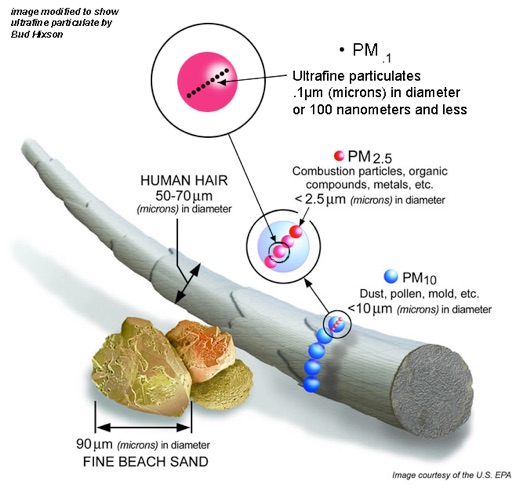



“There has to be a focus on ultrafines . . . and it hasn’t happened. Air pollution is getting worse-not better.”
John R. Froines,Ph D.
South California Particle Center
See more information at:
http://www.aqmd.gov/aqmp/2012aqmp/Final-February2013/index.html
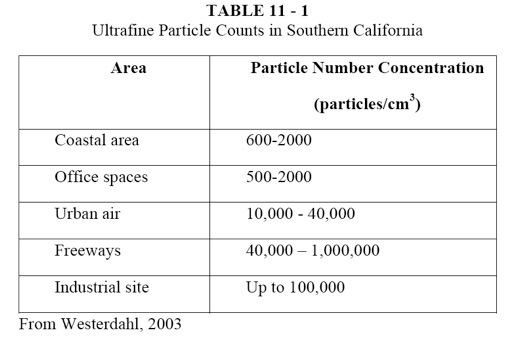
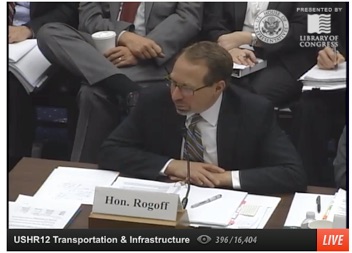

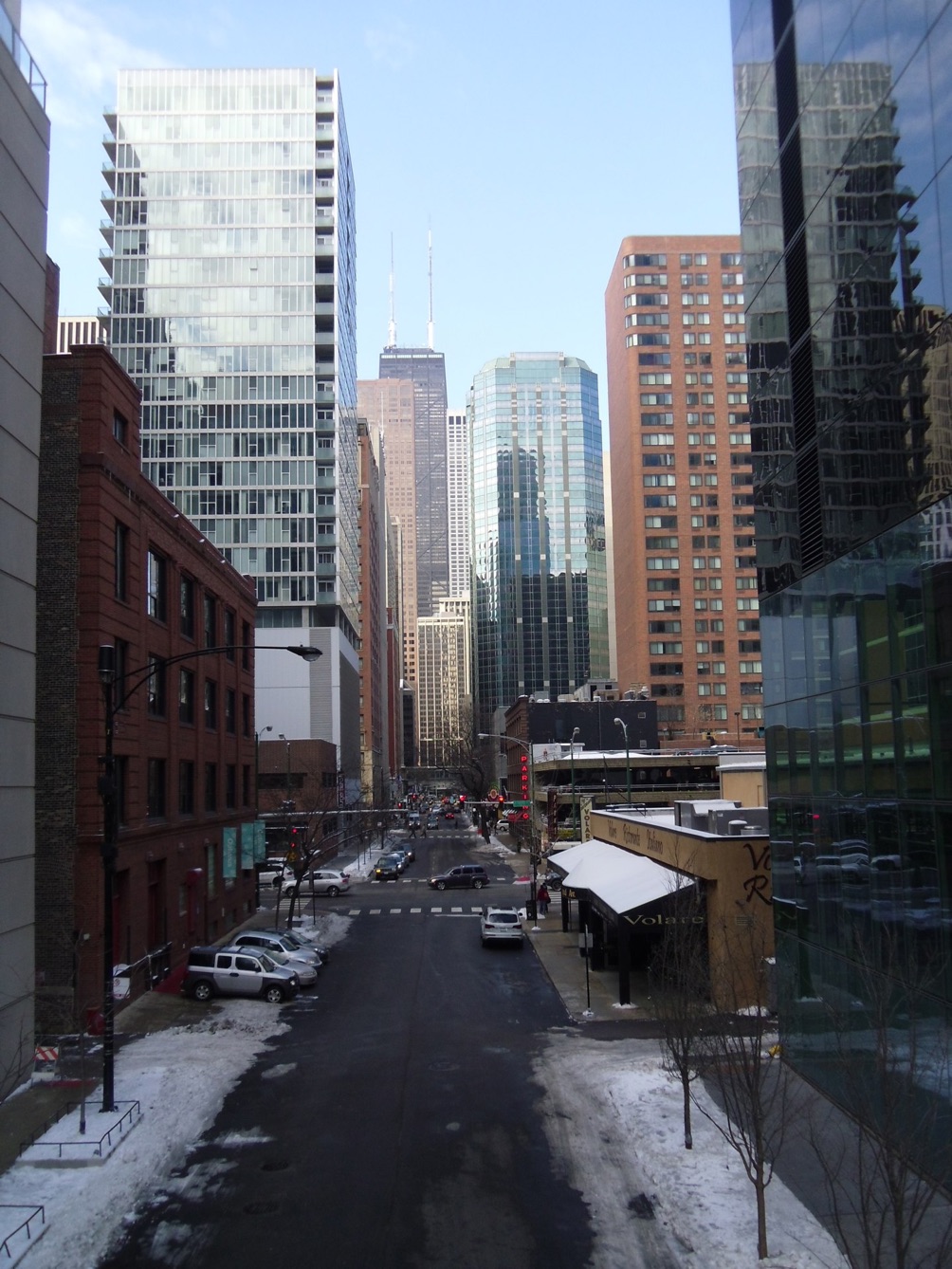

Mighty hive of commerce: Chicago

“Evidence has been accumulating during the past decade providing strong suggestions that exposure to high levels of high pollution, very common in many cities all around the world, is associated with damage to the CNS.
Human and animal studies have evidenced a series of common adverse effects of air pollution (PM in particular), with oxidative stress and neuroinflammation emerging as the hallmark effects. A variety of behavioral alterations has also been reported, together with changes in some neurotransmitter systems. These and other aspects of air pollution neurotoxicity need to be further investigated.
Newman et al. [51] reported hyperactivity in 7-year-old
children associated with early life exposure to traffic related
air pollution. Two studies by Volk et al. [52, 53] found that
residential proximity to freeways and gestational and early life exposure to traffic-related air pollution were associated with autism (OR = 1.86; 95% CI 1.04–3.45). This was confirmed by another recent study in which perinatal DE exposure was significantly associated with autism spectrum disorders (ASD), particularly in boys [54]. The latter findings are particularly of interest, as there is increasing evidence indicating that children with ASD have higher levels of oxidative stress [55–57], as well as increased neuroinflammation and systemic inflammation [58–60]. As noted earlier, these are the typical effects found in individuals exposed to severe air pollution.
Particularly troublesome is the suggestion that air pollution
may contribute to the etiopathology of neurodevelopmental
and neurodegenerative diseases (e.g., autism or dementia) whose incidence is increasing in the global populations.
Needless to say that, in addition to further biomedical
research to augment our understanding of the effects and
mechanisms of air pollution on the CNS,measures should be taken to curtail emissions and exposures.”
Neurotoxicants Are in the Air: Convergence of Human, Animal, and In Vitro Studies on the Effects of Air Pollution on the Brain
BioMed Research International
Volume 2014, Article ID 736385, 8 pages
Dying of Cars
The air particulate emissions of cars and trucks is emerging as the cause of damage to the central nervous system

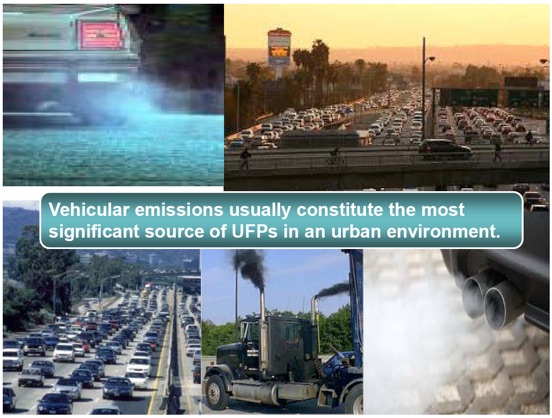
Slides from Ultrafine Particles on and near Roadways: Exposure Assessment and Mechanism Understanding, Yifang Zhu , Ph.D.
Associate Professor Environmental Health Sciences Department Fielding School of Public Health University of California Los Angeles Available for free download on the web